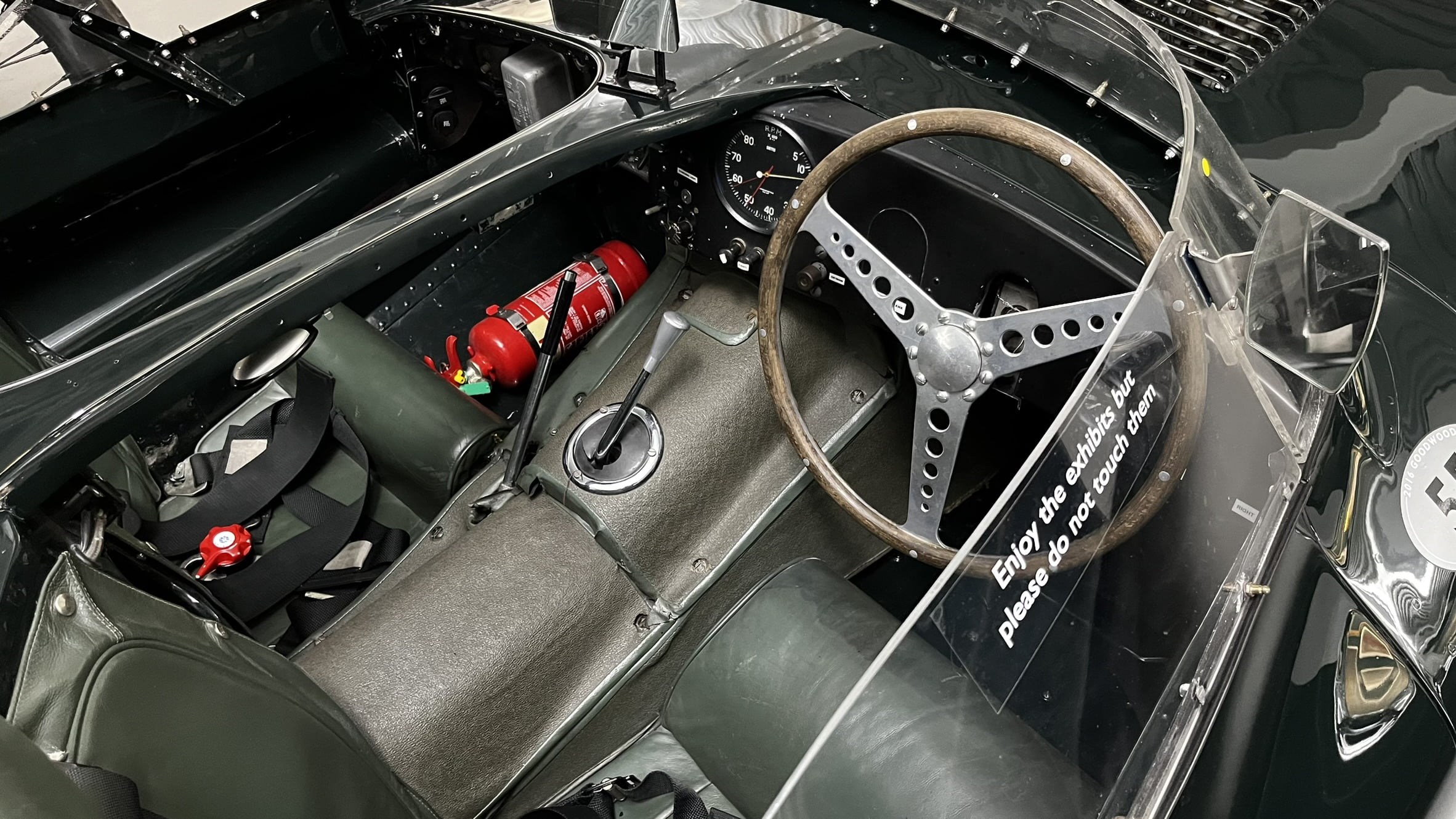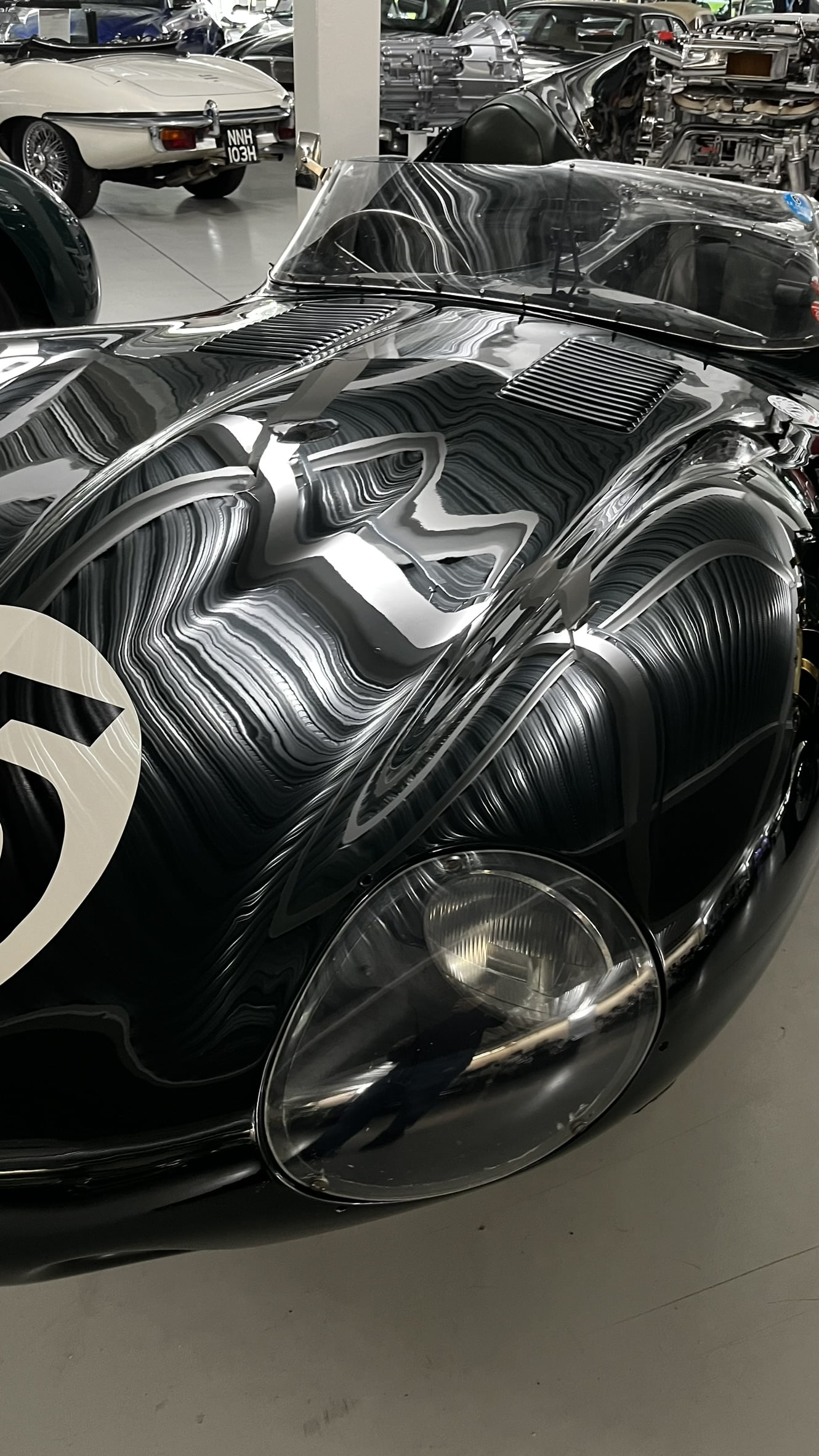1954 Jaguar D-Type
The Jaguar D-Type, produced between 1954 and 1957, is one of the most iconic and successful racing cars in automotive history. Renowned for its aerodynamic design, advanced engineering, and remarkable performance, the D-Type achieved legendary status through its dominant performances at the 24 Hours of Le Mans. With three consecutive victories from 1955 to 1957, the D-Type solidified Jaguar’s reputation as a powerhouse in the world of motorsport.
The D-Type was developed as the successor to the Jaguar C-Type, which had already achieved significant success in racing, including two victories at Le Mans. Jaguar’s chief engineer, William Heynes, and aerodynamicist Malcolm Sayer led the development of the D-Type, aiming to create a car that would push the boundaries of performance and aerodynamics. The development process was focused on incorporating lessons learned from the C-Type while implementing innovative technologies and design principles. The result was a car that not only looked revolutionary but also featured several groundbreaking advancements that would influence racing car design for years to come.
One of the most distinctive features of the D-Type was its aerodynamic body, designed by Malcolm Sayer. The car’s sleek, low-drag shape was achieved through extensive wind tunnel testing and advanced mathematical calculations. The distinctive tail fin, which extended from behind the driver’s head, was added to enhance high-speed stability and reduce aerodynamic lift. The D-Type utilized a monocoque construction, a pioneering approach at the time, which combined the body and chassis into a single unit. This design provided exceptional rigidity and reduced weight, contributing to the car’s impressive performance. The front subframe, which supported the engine and front suspension, was made of lightweight tubular steel. Under the hood, the D-Type was powered by Jaguar’s proven 3.4-liter inline-six engine, derived from the XK120. The engine featured dry sump lubrication, which allowed it to sit lower in the chassis, further improving the car’s center of gravity and handling. With triple Weber carburetors, the engine produced around 250 horsepower, giving the D-Type a top speed of over 170 mph. The D-Type’s suspension system was sophisticated for its time, featuring independent front suspension with torsion bars and a live rear axle with trailing arms and a Panhard rod. The car was also equipped with disc brakes on all four wheels, a technology Jaguar had helped pioneer with the C-Type, providing superior stopping power.
The Jaguar D-Type made its racing debut in 1954, and although it showed promise, it did not immediately achieve the success Jaguar had hoped for. However, the car’s potential was clear, and Jaguar continued to refine and improve the D-Type. In 1955, the D-Type achieved its first major victory at the 24 Hours of Le Mans, driven by Mike Hawthorn and Ivor Bueb. The race was marred by tragedy, with a horrific accident leading to the deaths of over 80 spectators. Despite the somber context, the D-Type’s victory demonstrated its remarkable capabilities and potential. Jaguar returned to Le Mans in 1956 with a more refined D-Type, featuring minor aerodynamic and mechanical improvements. The car once again proved its dominance, with a D-Type driven by Ron Flockhart and Ninian Sanderson securing victory. A privateer D-Type also finished in second place, showcasing the car’s reliability and performance. The pinnacle of the D-Type’s success came in 1957 when Jaguar achieved a stunning 1-2-3-4-6 finish at Le Mans. The winning car, driven by Ron Flockhart and Ivor Bueb, completed the 24-hour race with an average speed of over 100 mph. This extraordinary performance cemented the D-Type’s status as one of the greatest racing cars of all time.

Jaguar XK Engine
The XK engine in the XK120 was a 3.4-liter inline-six, featuring twin overhead camshafts—a design that was advanced for its time.
The Jaguar D-Type’s dominance at Le Mans and other racing events had a lasting impact on the world of motorsport and automotive engineering. The car’s aerodynamic design, advanced construction techniques, and use of disc brakes set new standards and influenced the development of future racing and road cars. In total, only 75 D-Types were produced, along with an additional 16 XKSS road-going versions, making them highly sought after by collectors and enthusiasts. The D-Type’s combination of beauty, innovation, and racing success ensures its place as one of the most iconic and valuable classic cars in history. The legacy of the D-Type continues to be celebrated, with Jaguar even producing a limited run of new D-Types in 2018, built to the original specifications using traditional methods. These continuation models honor the heritage and craftsmanship that made the original D-Type a legend.






